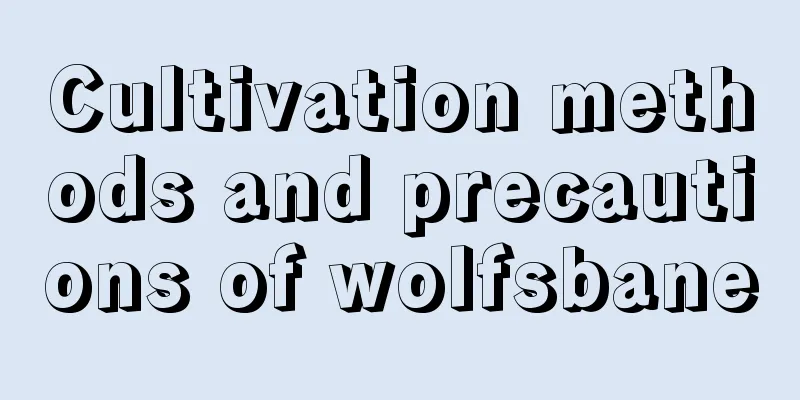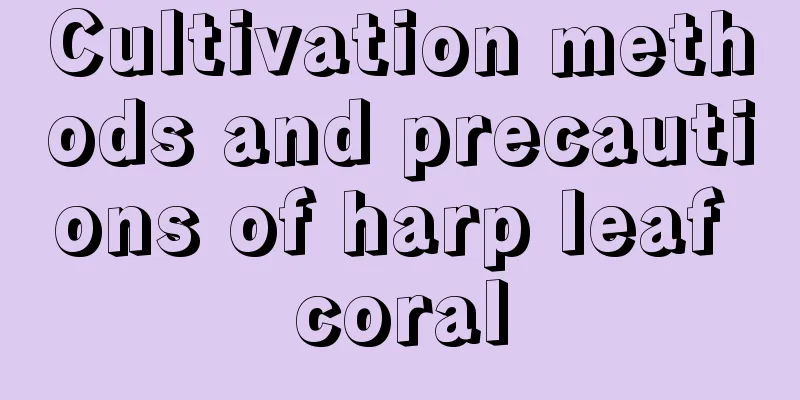Cultivation methods and precautions of wolfsbane

1. Maintenance methods1. Temperature: It can withstand both low and high temperatures, and has basically no requirements for maintenance temperature. It can be planted regardless of the north or south of my country. 2. Watering: Unless there is drought, there is no need to water it because it is drought-resistant. If the drought lasts for more than one month, it will need to be watered artificially, generally once a week, until the soil is completely wet. 3. Fertilization: It is tolerant to barrenness and does not require high nutrients, but this does not mean that it does not need topdressing. In order to promote growth, it is best to fertilize it once a month. You can use farmyard manure or nutrient-rich compound fertilizer. It should be noted that thin fertilizer should be used, otherwise it is easy to cause fertilizer damage. 4. Light: It can accept strong light environment or semi-shade environment, so you don’t have to worry too much about light issues during maintenance, just raise it normally. 2. Breeding techniques1. Reproduction: It can be propagated by root division. First, you need to take out the underground rhizomes, and then cut them into small sections of ten centimeters for reproduction. What needs to be noted is that the incision needs to be disinfected before planting to avoid diseases and pests. 2. Pruning: Generally, it does not require pruning. You only need to prune away the dry and rotten branches. 3. Problem Diagnosis1. Pests: It is highly toxic and basically has no pests. 2. Pathology: If the branches and leaves turn yellow, it is mostly caused by improper watering. If there is water accumulation in the soil, you need to control the water temporarily and wait until the accumulated water in the soil is completely dry before watering it again. If it is caused by too little watering, you need to water it, but don't water too much at one time. Just water it until the soil is completely moist. IV. Other issues1. Edibility: It is not edible. 2. Toxicity: Its rhizomes contain a large amount of toxins and must not be eaten. The more developed its root system is, the more toxic it is. For example, if the roots of other plants grow together with its roots, it will be difficult for other plants to survive. If you accidentally eat it, you need to drink plenty of water to dilute the venom, otherwise it will cause diarrhea. |
<<: Cowpea cultivation methods and precautions
>>: Cultivation methods and precautions of edamame
Recommend
What to do if the chicken feather vegetable grows too long
What does it look like when chicken feather veget...
When is the best time to prune elmleaf plum
Pruning effect of elmleaf plum Because Prunus arm...
How to grow colorful ivy so that it blooms
1. Adequate sunlight The colorful ivy is mainly u...
What to do if the kumquat tree loses leaves
1. Insufficient nutrients If it is often in a nit...
How to prune pine
When to prune the pine The philadelphus thuja can...
What to do if the leaves of the money tree wilt
1. Rehydrate in time Reason: The leaves of the mo...
Is the lucky charm suitable for home breeding?
1. Is it suitable for home breeding? The lucky ch...
What fertilizer to use for lucky bamboo
The roots of lucky bamboo need sufficient fertili...
I planted colorful peppers on the balcony, but my naughty kid thought they were cherries and stole them!
This is how to grow colorful peppers. One tree ca...
Hibiscus cultivation methods and precautions
flowerpot The flowerpot should be breathable enou...
How many flowers do you remember playing with as a child?
1. Dogtail grass When I was a child, electronic d...
Rose cutting method and time
1. Cutting time Its cuttings are mainly carried o...
What is Betel Nut?
1. Family Areca nut is an evergreen plant of the ...
When is the best month to prune peony flowers? When is the best month to prune branches and leaves?
Peony pruning time The pruning of peonies is main...
What flowers are suitable for planting in summer
1. Petunia It prefers sunlight and its daily main...









